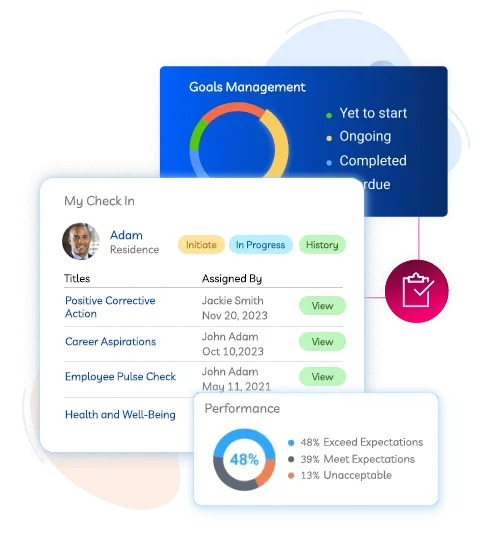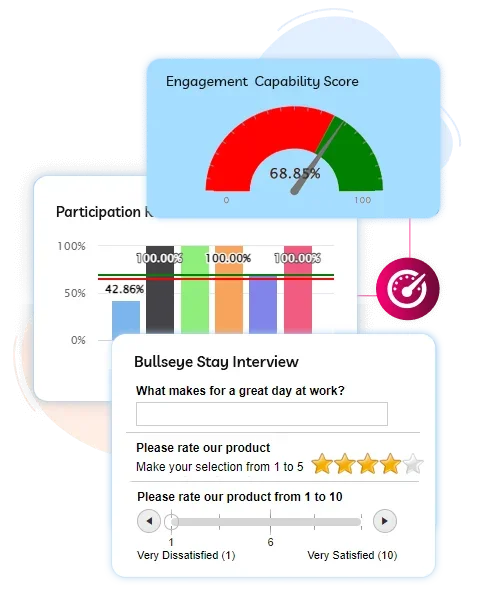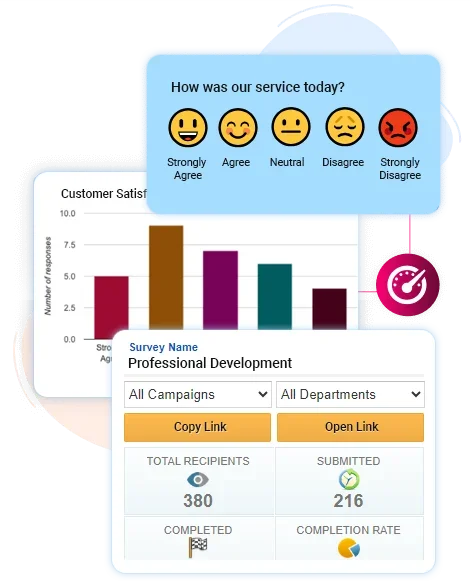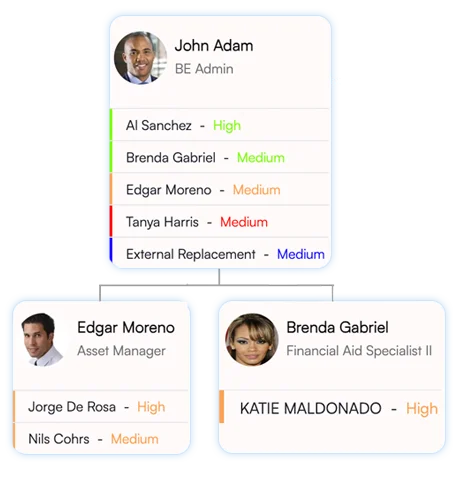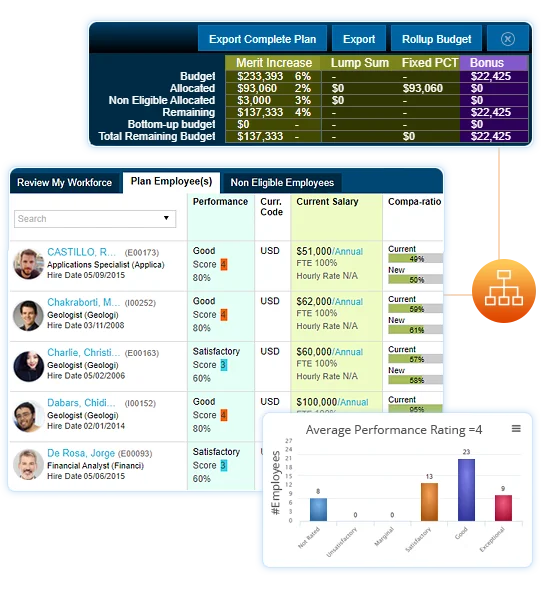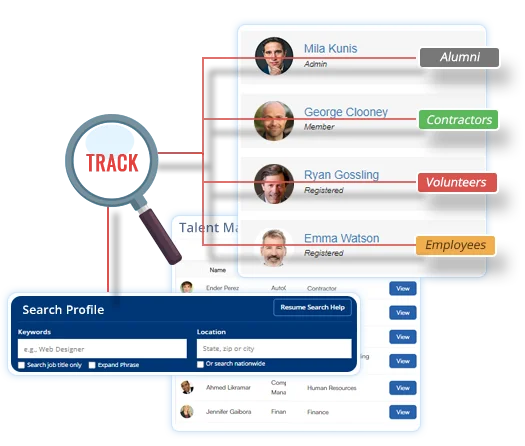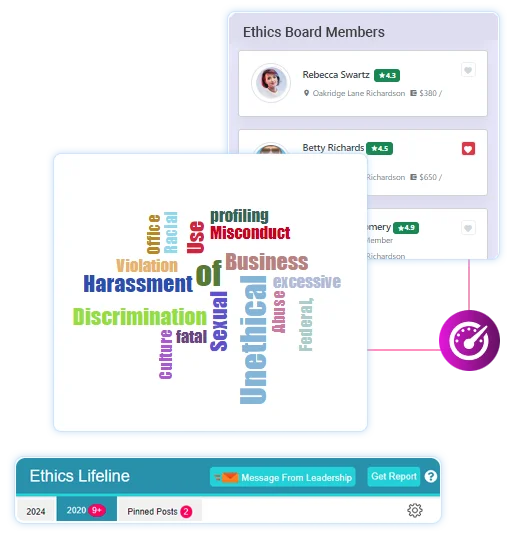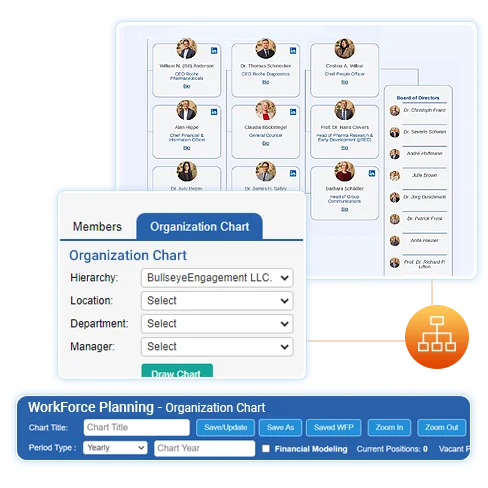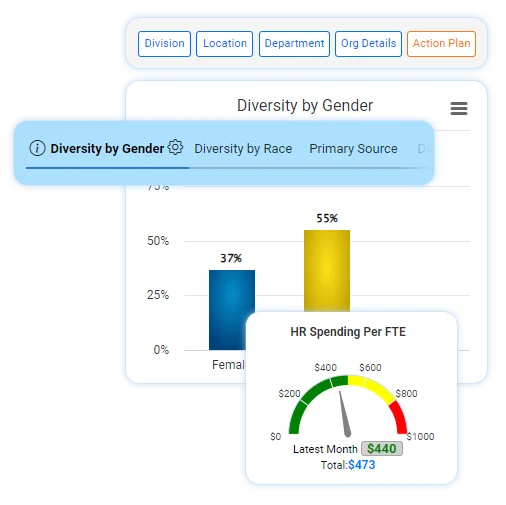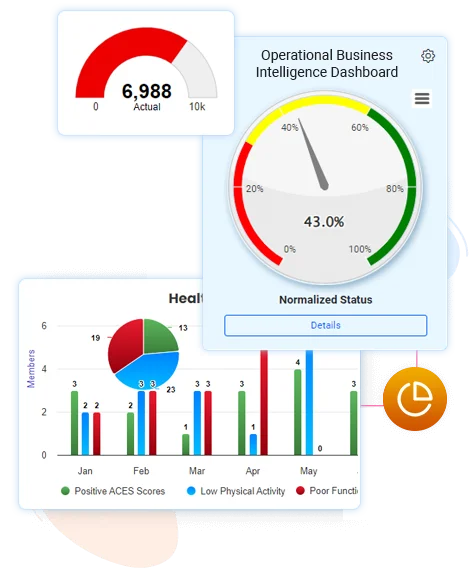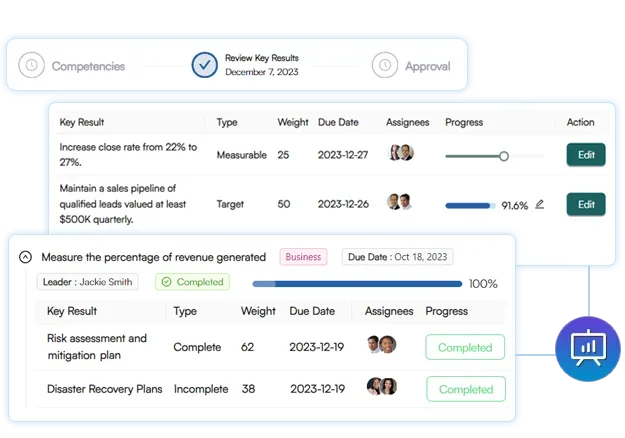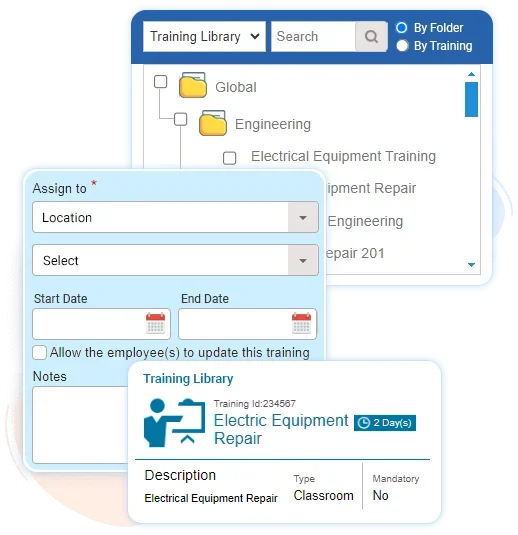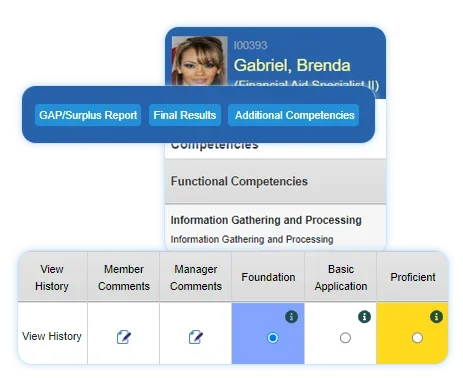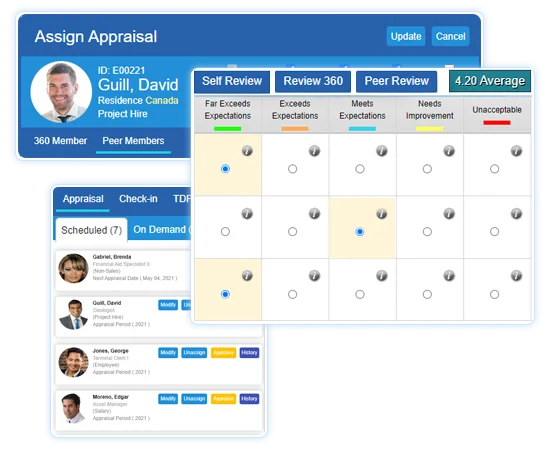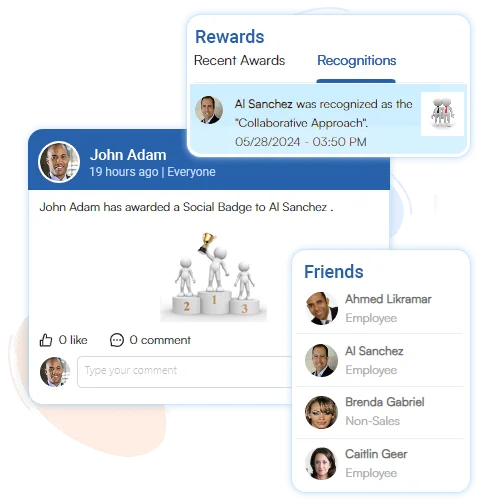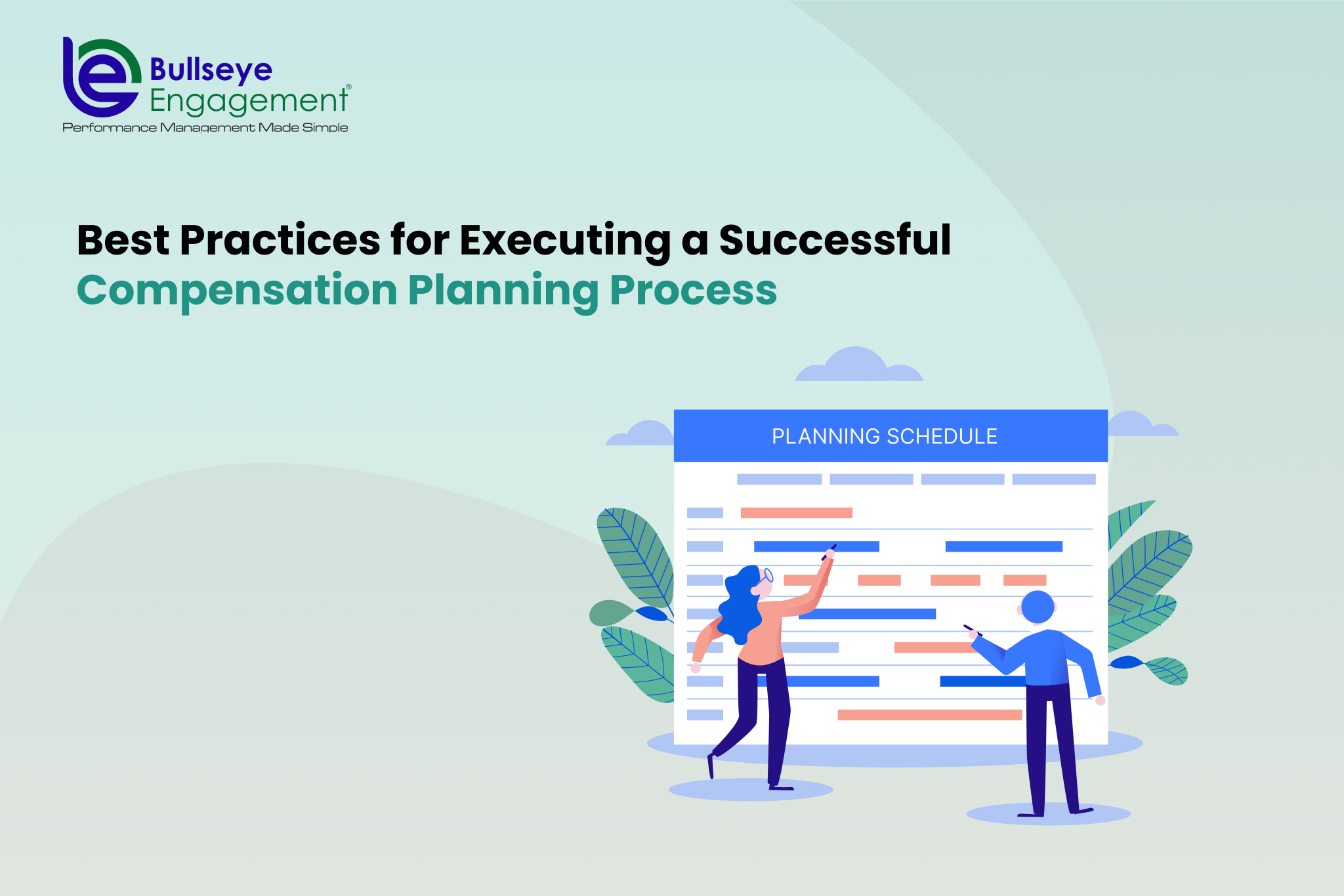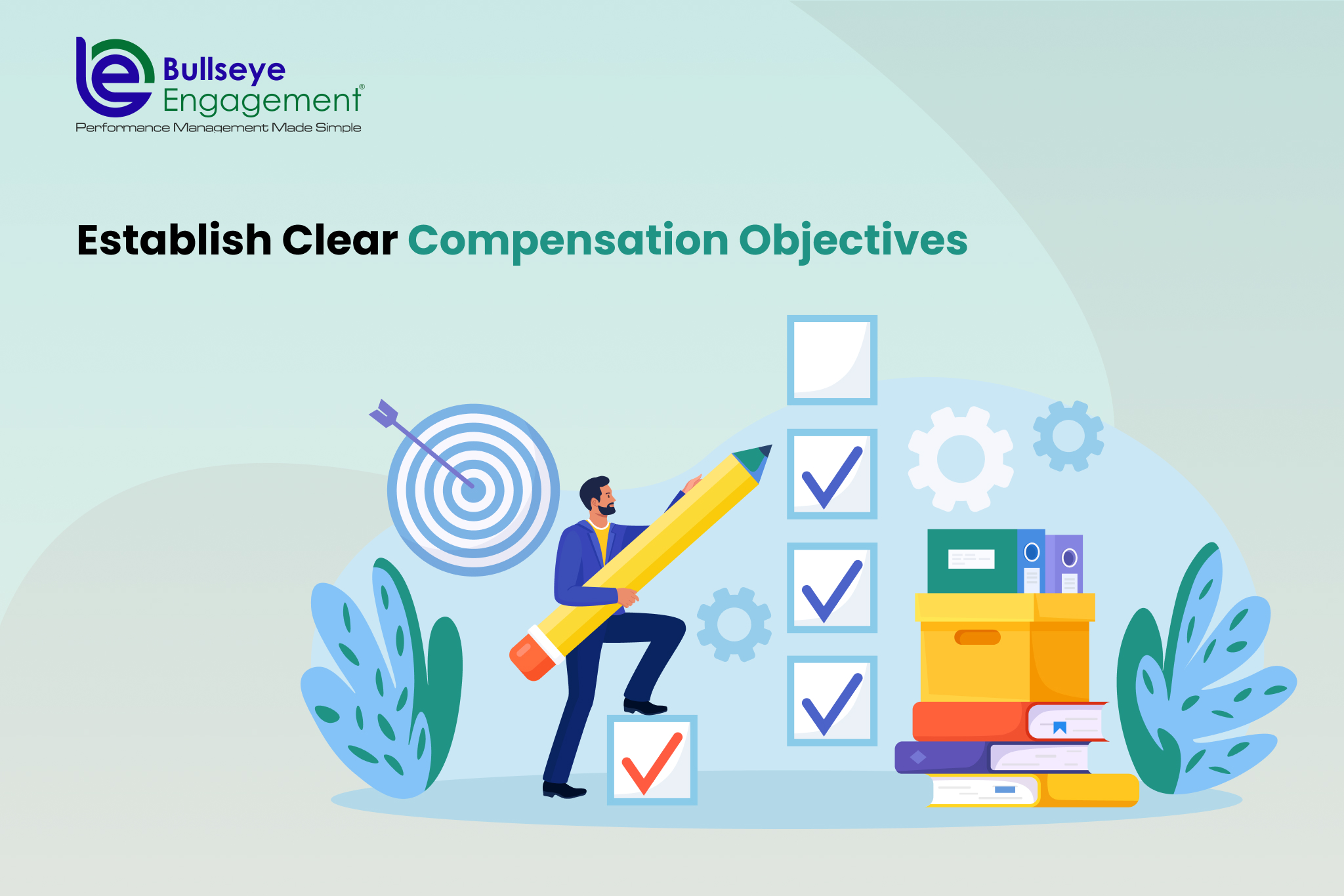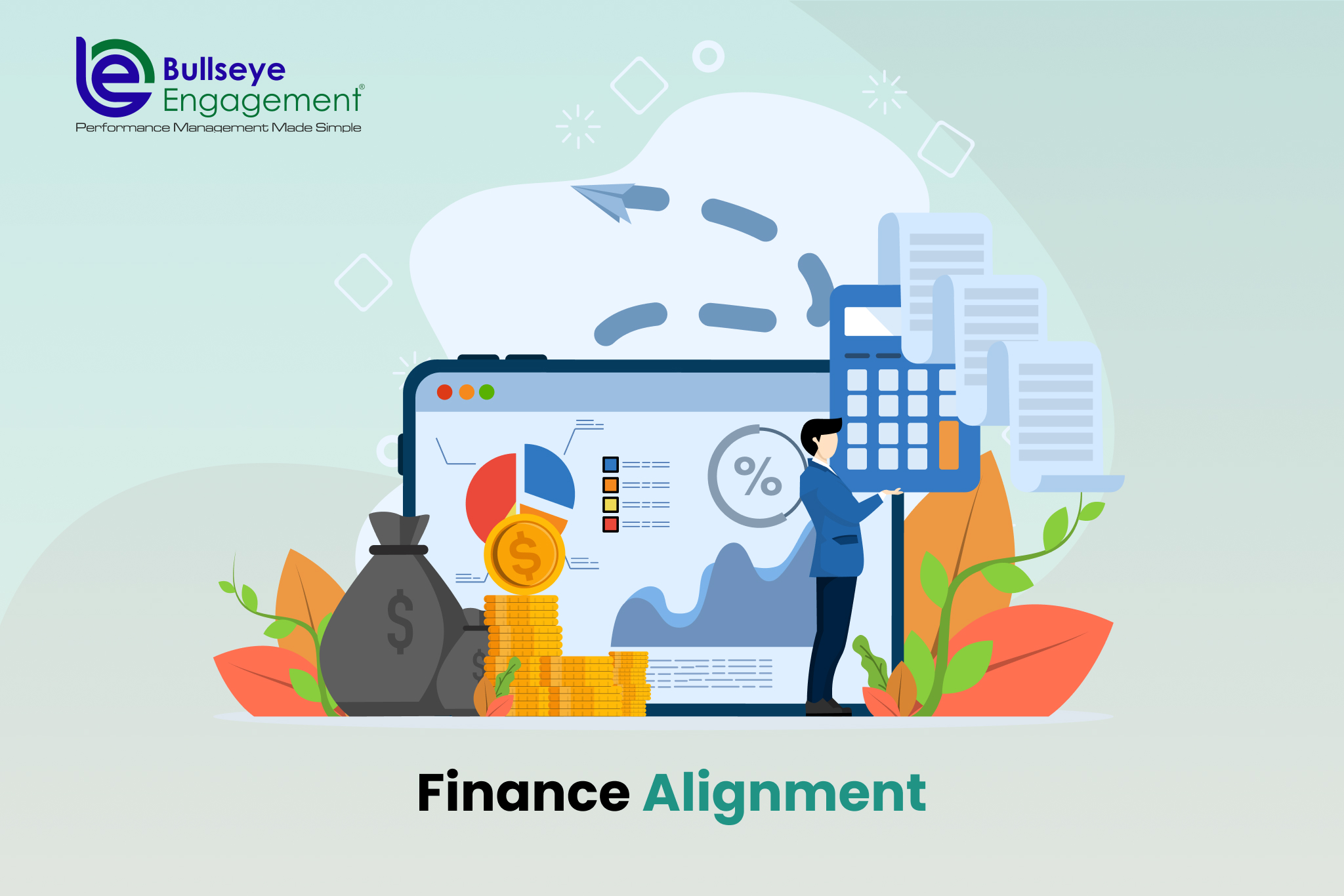With every business, one of the most critical aspects of talent management and workforce planning is Compensation planning. At BullseyeEngagement we understand, that a well-executed compensation planning process not only ensures that your employees are fairly rewarded for their contributions but also helps you align your workforce with your organizational goals and strategies.
In every industry, compensation planning is a cornerstone of effective talent management and workforce alignment. BullseyeEngagement’s compensation planning software goes beyond traditional methodologies. We don’t just offer a process; we present a solution. With our platform, businesses can seamlessly tie pay to performance, delegate pay adjustment recommendations to their managers, and empower those managers to align compensation adjustments with budget constraints. By doing so, we ensure that employee rewards align perfectly with their contributions and organizational goals. Dive deeper into our offerings to discover how BullseyeEngagement is revolutionizing compensation strategies for businesses like yours.
BullseyeEngagement’s Compensation Planning software helps in careful planning, thorough analysis, and a deep understanding of market trends and internal dynamics.
In this blog, we will explore the key strategies and best practices that can guide you in executing a successful Employee Compensation strategy.
BullseyeEngagement’s compensation planning software assists with careful planning, thorough analysis, and a deep understanding of market trends and internal dynamics. We will explore the key strategies and best practices that can guide you in executing a successful Employee Compensation strategy.
So, whether you’re a seasoned HR professional looking to fine-tune your compensation strategy or a business leader aiming to enhance your organization’s overall performance, this guide will provide you with invaluable insights to navigate the complex world of compensation planning.
Table of Content
Establish Clear Compensation Objectives
The foundation of any successful compensation planning process lies in establishing clear and well-defined compensation objectives:
1. Align with Organizational Goals
The first step in setting compensation objectives is to align them with your organization’s broader goals and strategies. Consider what your company is trying to accomplish in the short and long term. Are you looking to expand into new markets? Do you want to improve employee retention rates? Are cost control and efficiency top priorities? Your compensation objectives should mirror these objectives, ensuring that compensation becomes a tool for achieving organizational success.
2. Attract and Retain Talent
Your compensation objectives should ensure that your pay packages are competitive within your industry and region. Conduct regular market analyses to understand salary trends and adjust your compensation offerings accordingly. Additionally, consider incorporating non-monetary benefits, such as career development opportunities and work-life balance, into your objectives to appeal to a diverse talent pool.
3. Motivate and Reward Performance
Compensation should motivate employees to perform at their best and reward exceptional contributions. Define your compensation objectives to incentivize high performance and tie rewards to measurable goals and achievements. For example, This can include performance-based bonuses, stock options, or profit-sharing programs.Ensure your objectives encourage a culture of excellence and accountability within your organization.
4. Ensure Fairness and Equity
Transparency and fairness are essential in compensation planning. Your objectives should explicitly state your commitment to pay justice and equity, addressing issues like gender pay gaps or wage disparities among different roles. Implement policies and processes that promote pay equity and regularly review your compensation structure to identify and rectify any discrepancies.
5. Budgetary Considerations
Your compensation objectives should also consider budgetary constraints. Determine how much of your budget can be allocated to compensation without compromising other critical areas of your business.The right balance between competitive pay and fiscal responsibility is vital to long-term sustainability.
Conduct Comprehensive Market Research
A successful compensation planning process requires comprehensive market research. This step is crucial for gaining insights into current industry standards and trends.
To effectively conduct market research, consider the following key aspects:
1. Analyze Industry Trends
Understanding the ever-evolving landscape of compensation practices within your industry is paramount. Industry trends can vary widely and are influenced by factors such as economic conditions, labor market competitiveness, and shifts in talent demands. By keeping a close eye on these trends, you can ensure that your compensation plans remain competitive and attractive to potential hires.
2. Benchmark Wisely
Benchmarking is a vital component of market research, allowing you to compare your organization’s compensation practices with those of competitors or industry leaders. However, it’s essential to benchmark wisely, considering factors such as company size, location, and talent requirements. Here’s how to approach benchmarking effectively:
1. Peer Group Selection: Select a peer group of companies that closely resemble your organization in terms of industry, size, and location. This ensures that your benchmarks are relevant and reflective of your competitive landscape.
2. Data Sources: Utilize reliable sources for benchmarking data, such as industry-specific surveys, compensation databases, or consulting firms. Make sure the data is up-to-date and covers a wide range of job roles within your organization.
3. Customization: Tailor your benchmarking data to your organization’s unique circumstances. Adjust benchmarks based on factors like geographic cost-of-living differences or specific skills required for your industry.
Involve Managers
Your front-line managers are often the closest to your employees and have valuable insights into their performance, skills, and contributions. They play a pivotal role in the compensation planning process. By involving managers in the decision-making process, you can gather essential data and perspectives that are critical for fair and accurate compensation decisions. Here’s how you can effectively involve managers:
Regular Communication: Establish a channel of open and consistent communication with managers. Encourage them to provide feedback on individual employee performance and potential compensation adjustments.
Training and Guidelines: Provide training to managers on compensation planning and guidelines to help them make informed recommendations. Ensure they understand the organization’s compensation philosophy and objectives.
Feedback Loops: Create a feedback loop where managers can review and discuss proposed compensation changes with HR and finance teams. This allows for a collaborative and iterative approach to compensation decisions.
Transparency: Maintain transparency in the compensation planning process. Managers should understand how decisions are made, and employees should have clarity on how their compensation is determined.
Finance Alignment
Financial alignment is another crucial aspect of cross-functional collaboration in compensation planning. It’s essential to work closely with your finance team to ensure that your compensation decisions align with the organization’s budget and financial goals. Here’s how you can achieve financial alignment:
Budgetary Planning: Collaborate with the finance department to establish a clear compensation budget. This budget should consider factors such as salary increases, bonuses, and other incentives.
Data Analysis: Work with finance to analyze the financial impact of different compensation scenarios. What are the costs associated with proposed changes, and how do they fit into the overall financial strategy?
Compliance and Reporting: Ensure that your compensation planning process complies with financial regulations and reporting requirements. Finance can provide valuable insights into legal and financial compliance.
Scenario Modeling: Create financial scenarios that align compensation decisions with the organization’s growth and profitability targets. This helps in making informed choices while keeping an eye on the bottom line.
Prioritize Transparency and Communication
In the world of compensation planning, transparency and communication are your steadfast allies. They form the foundation upon which trust and understanding between employees and the organization are built. Here’s how to effectively incorporate them into your compensation planning process:
Communicate Clearly
Open and clear communication is paramount. When employees understand the rationale behind compensation decisions, they are more likely to feel valued and motivated. Ensure that your compensation strategy and the factors influencing it are communicated effectively to your workforce. Address questions, provide context, and offer opportunities for employees to seek clarification.
Provide Feedback
Feedback is a two-way street. Encourage employees to share their thoughts and concerns regarding the compensation structure. Actively listen to their feedback and consider it during your planning process. Constructive feedback can lead to adjustments that enhance the fairness and effectiveness of your compensation strategy.
Regularly Review and Adapt
The business landscape is constantly evolving, and your compensation strategy should too. Regularly review your compensation plans to ensure they align with your organization’s goals and market trends. By staying attuned to changes in the industry and your company’s performance, you can make timely adjustments to your compensation structure.
Annual Review
An annual compensation review is a standard practice. It allows you to assess the effectiveness of your current compensation plans and make necessary adjustments. During this review, consider factors like employee performance, market competitiveness, and budgetary constraints. Use this opportunity to realign your compensation strategy with your organization’s objectives.
Stay Agile
In today’s dynamic business environment, agility is key. Unexpected changes can occur at any time, and your compensation plans should be flexible enough to adapt. Whether it’s a sudden market shift, a change in corporate strategy, or a unique talent acquisition opportunity, your compensation planning process should be agile enough to accommodate these fluctuations.
Conclusion
We’ve enlisted almost all the essential features of an ideal Compensation Planning Software, From conducting thorough market research and embracing data-driven decision-making to fostering transparency and communication, these practices can help you build a compensation strategy that not only meets the needs of your employees but also aligns seamlessly with your company’s goals and aspirations.
BullseyeEngagement is dedicated to assisting organizations like yours in optimizing their compensation planning processes. With the right tools and support, you can navigate the complexities of compensation planning with confidence, ensuring your employees feel valued, engaged, and motivated to contribute their best to your organization’s success.
By implementing the best practices outlined in this blog, you are well-equipped to drive positive change, foster employee satisfaction, and ultimately achieve your strategic business objectives. As you move forward on this journey, BullseyeEngagement stands ready to partner with you in your pursuit of compensation excellence.
